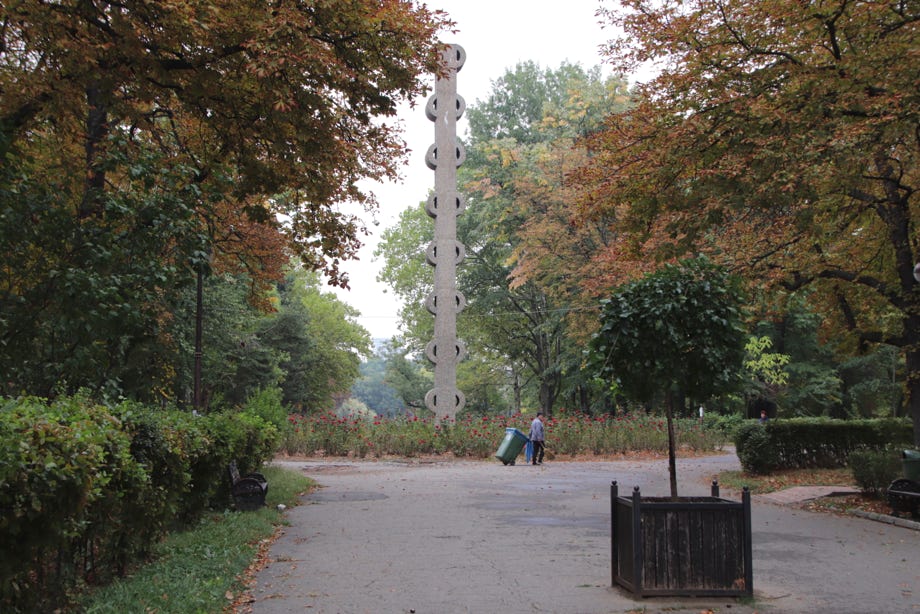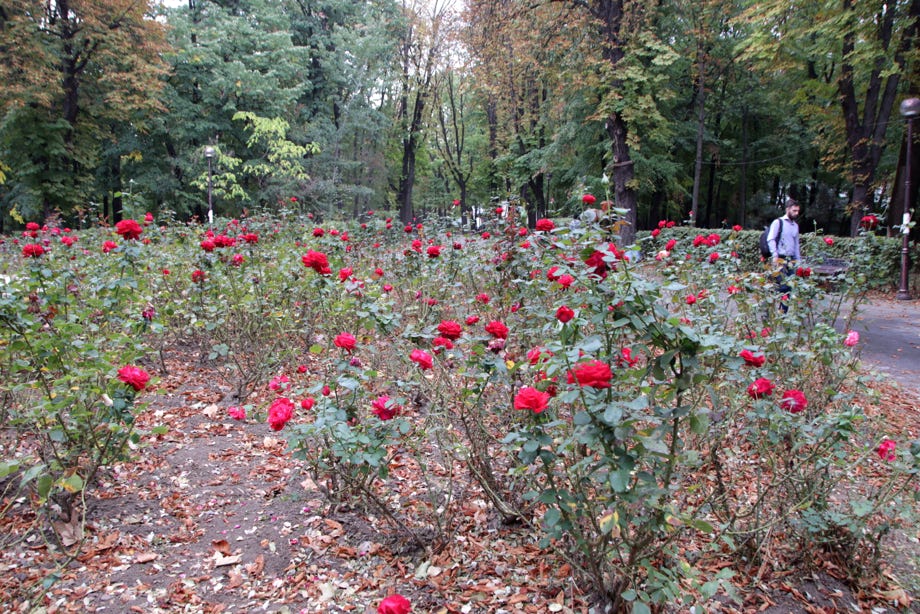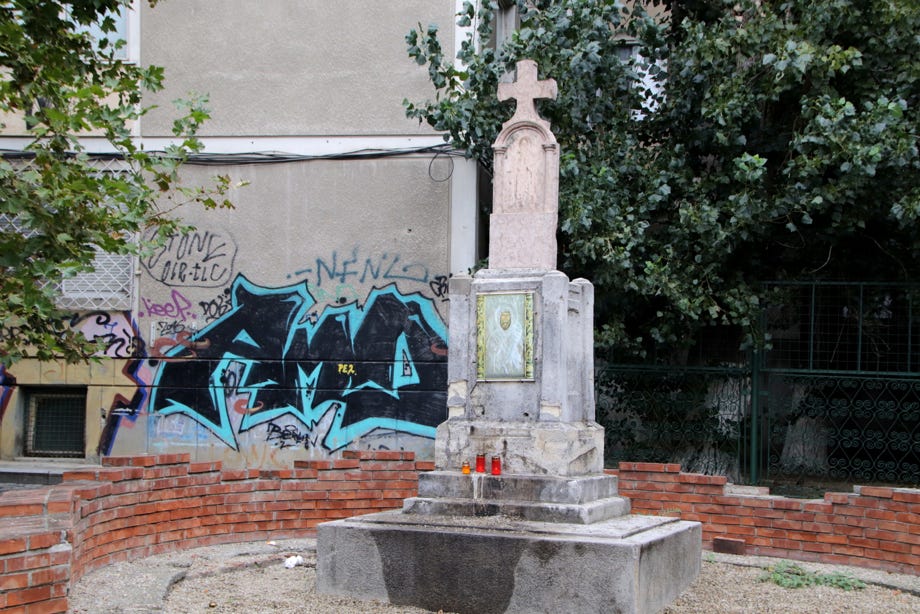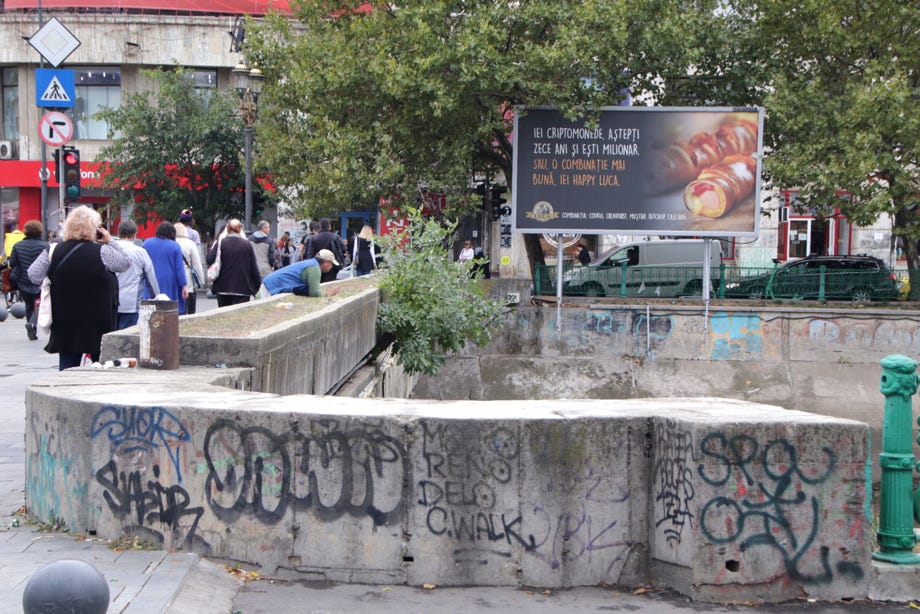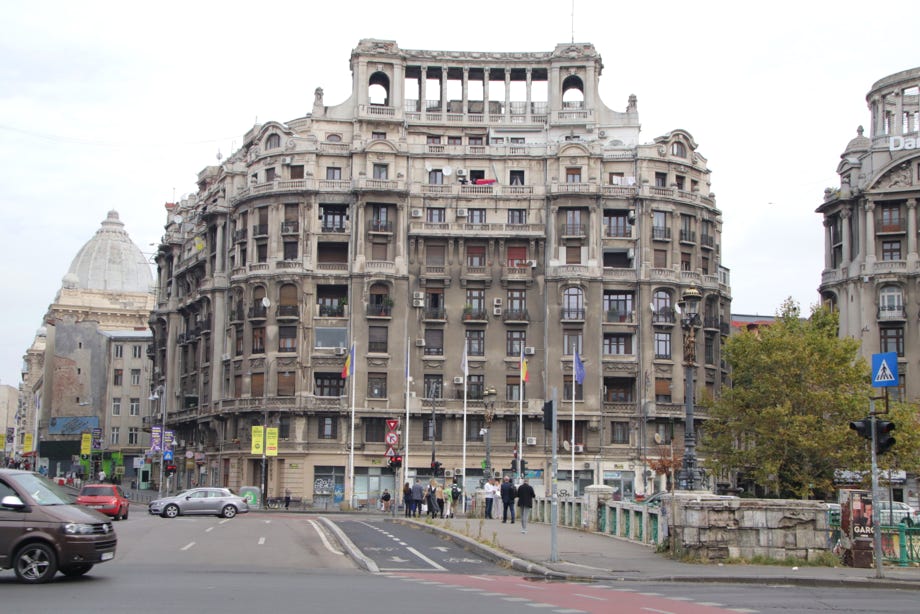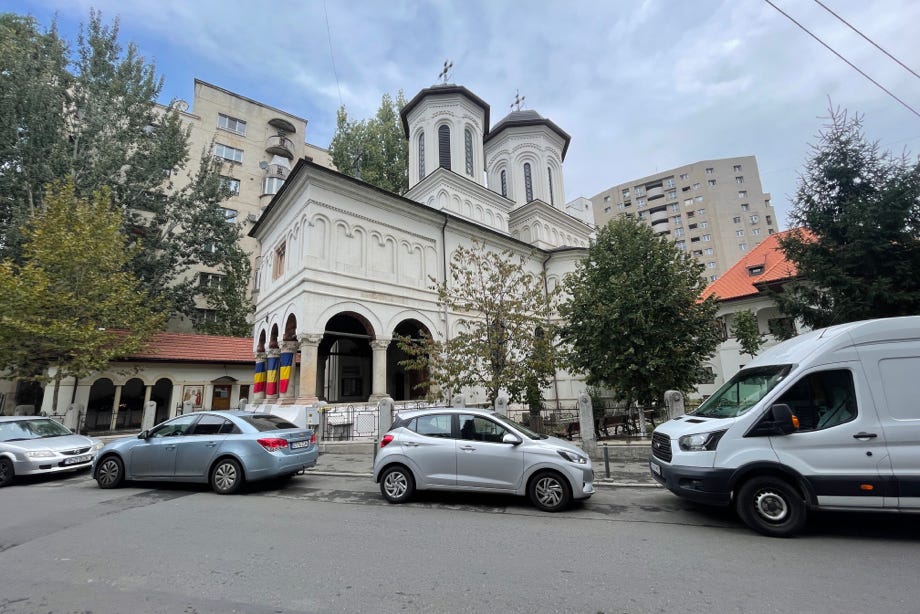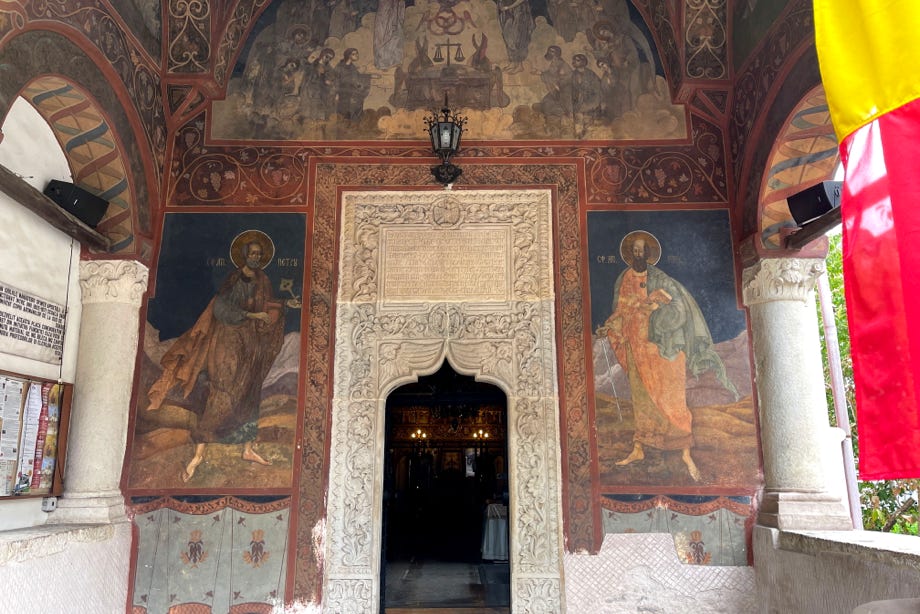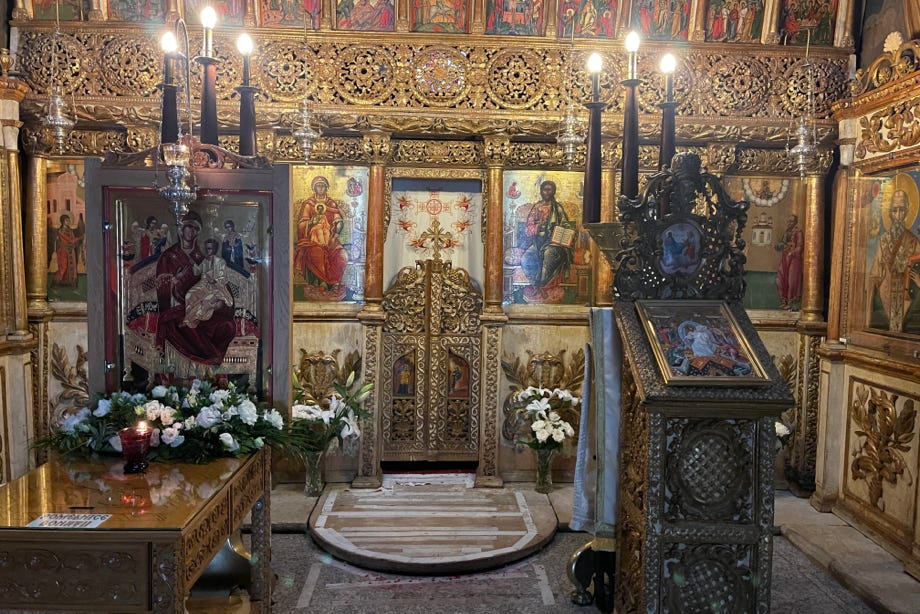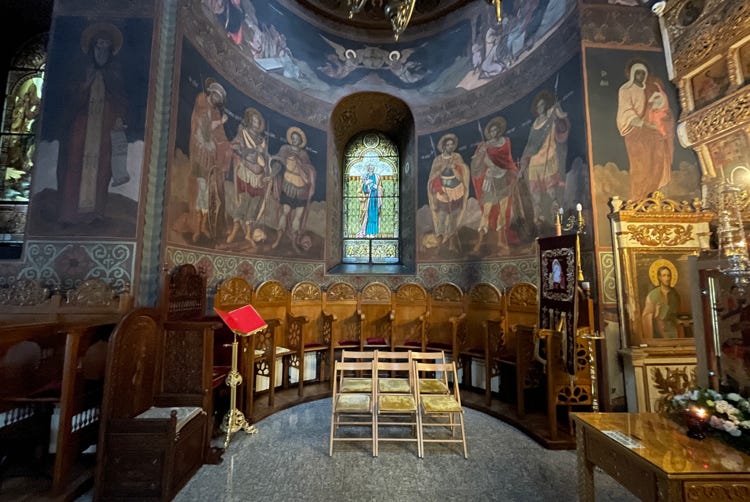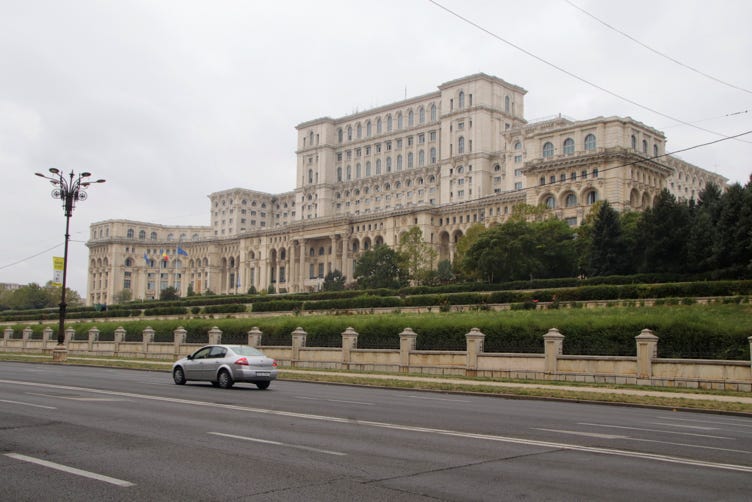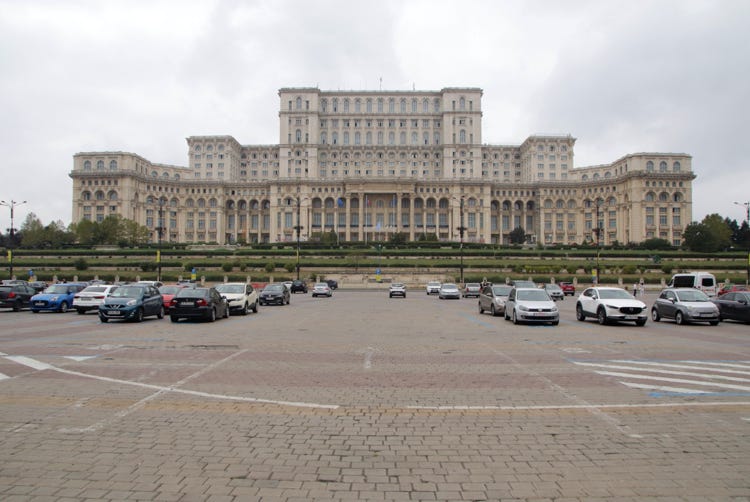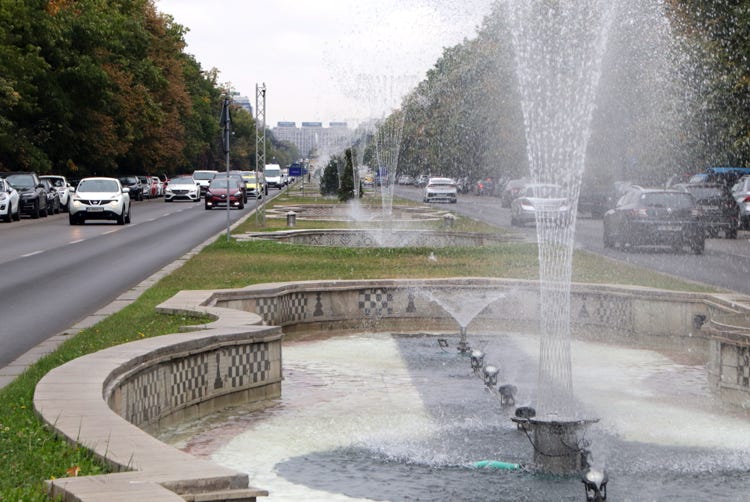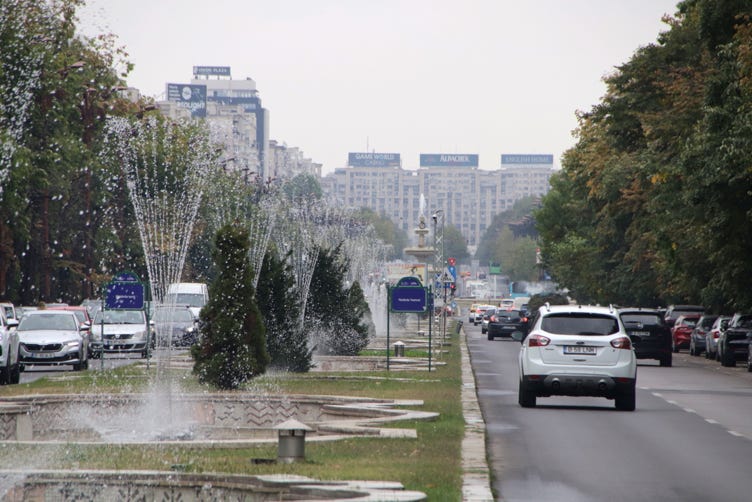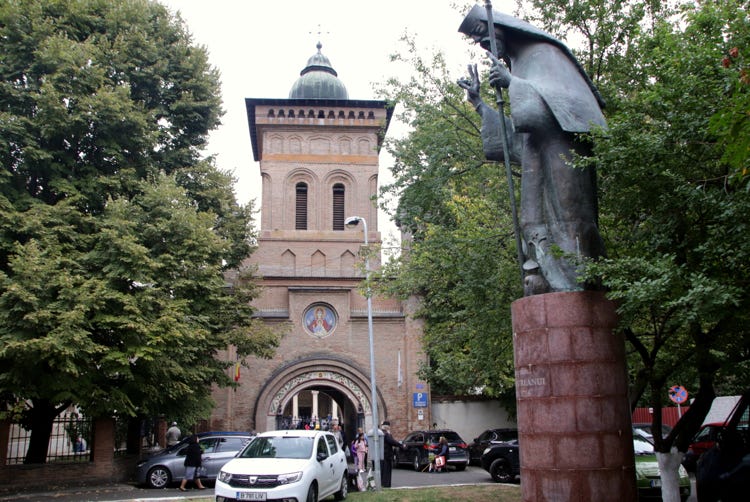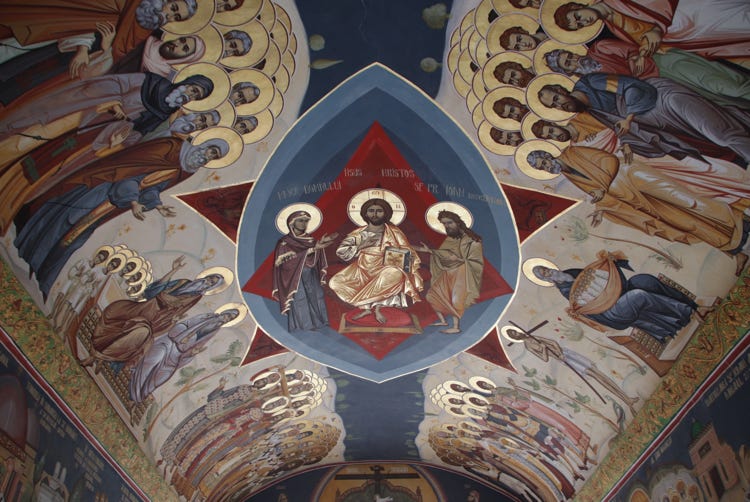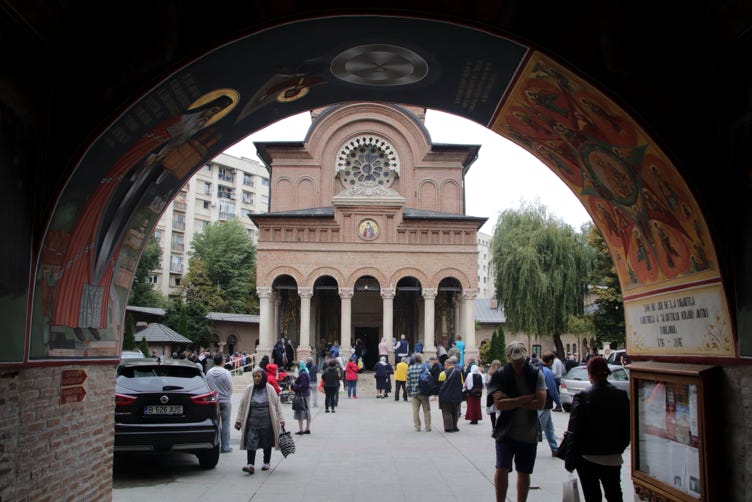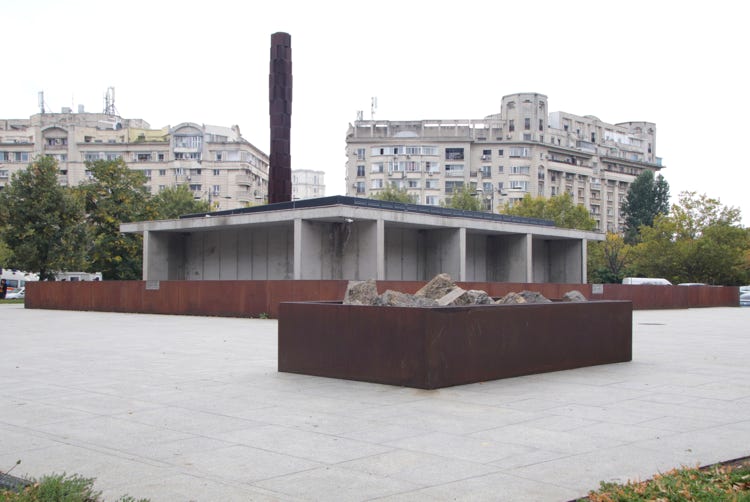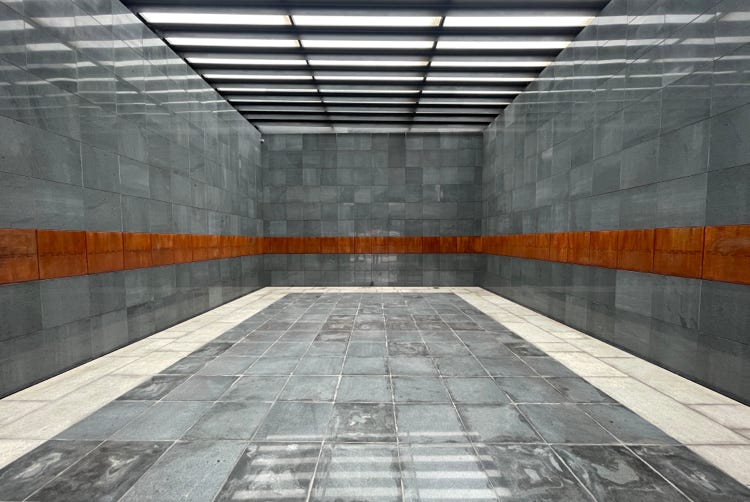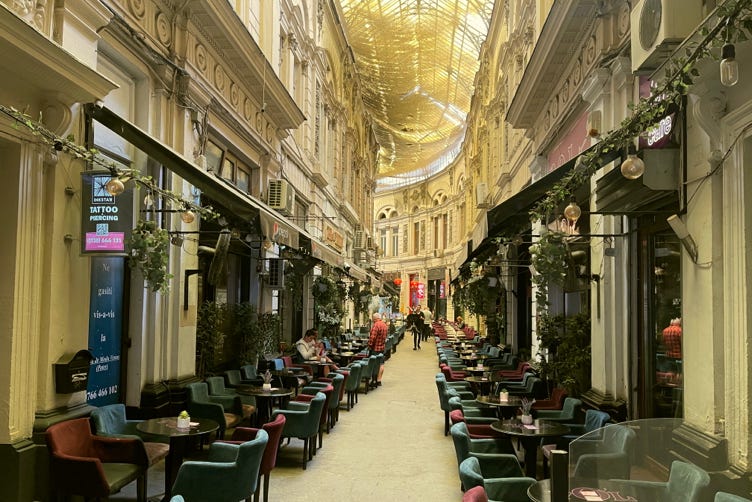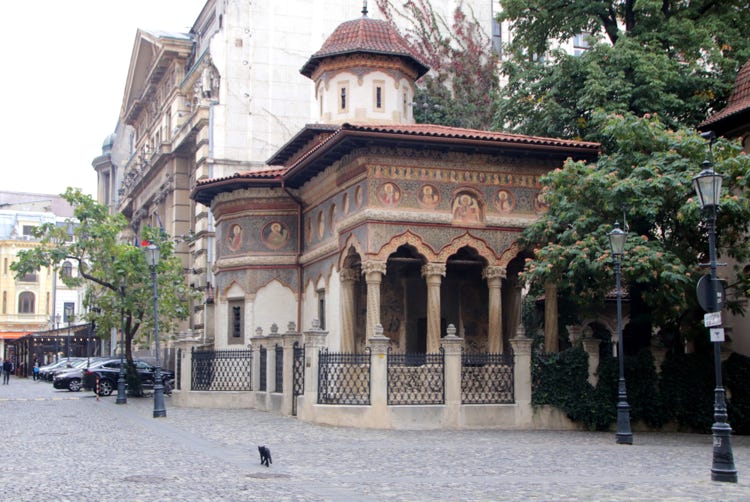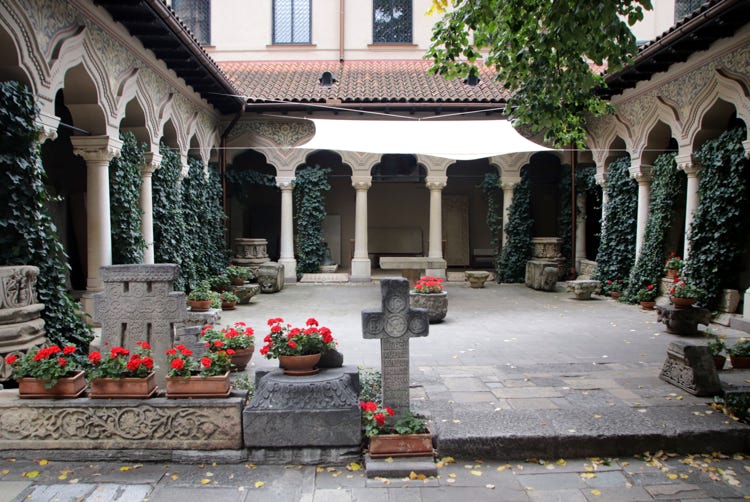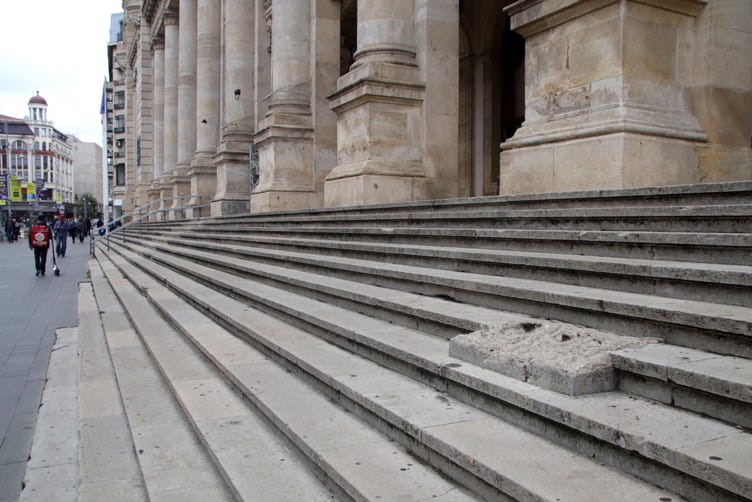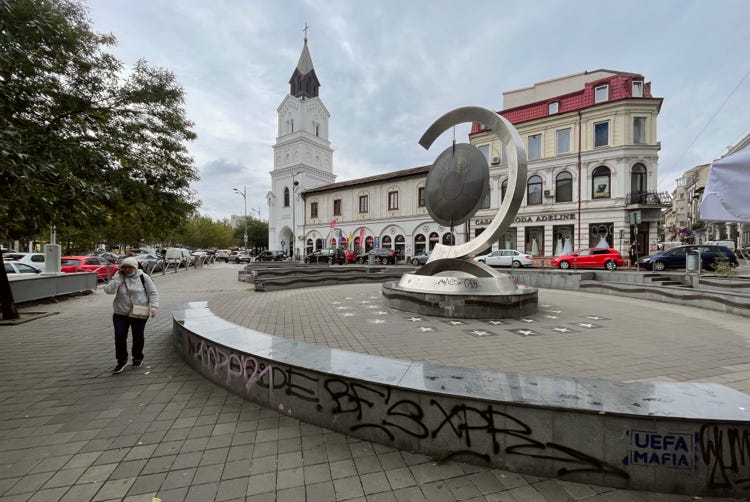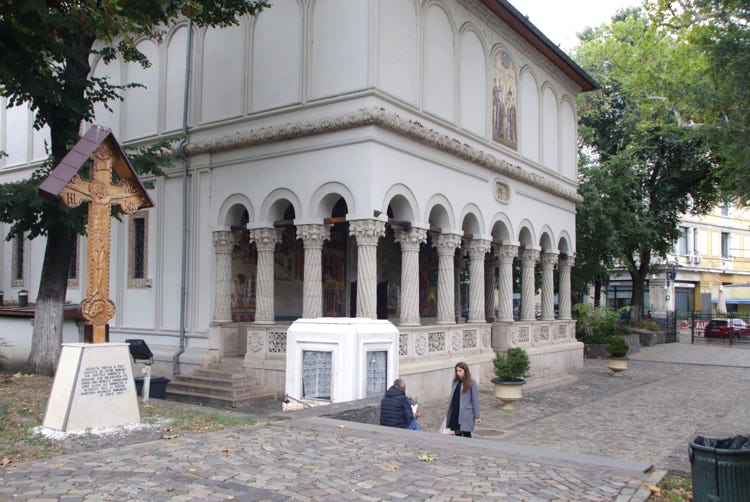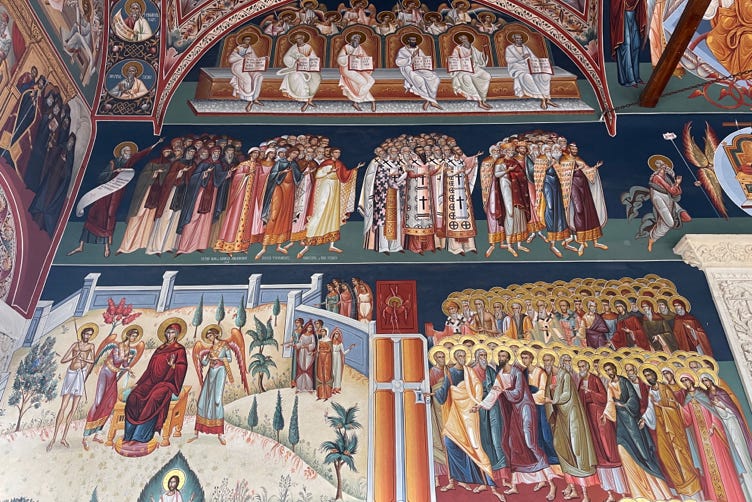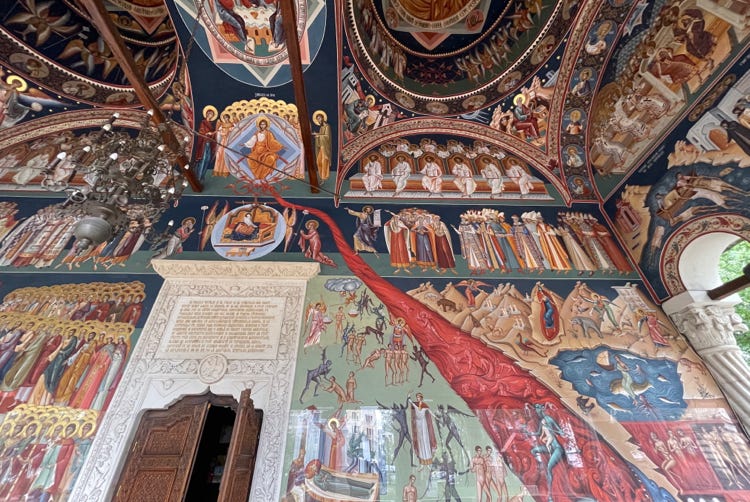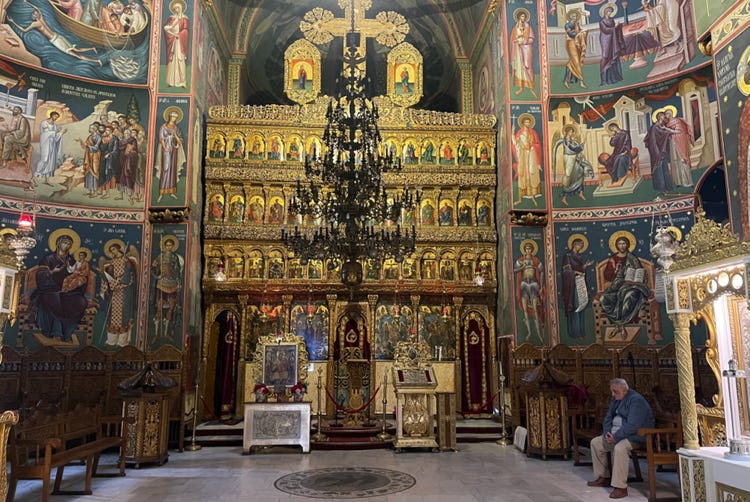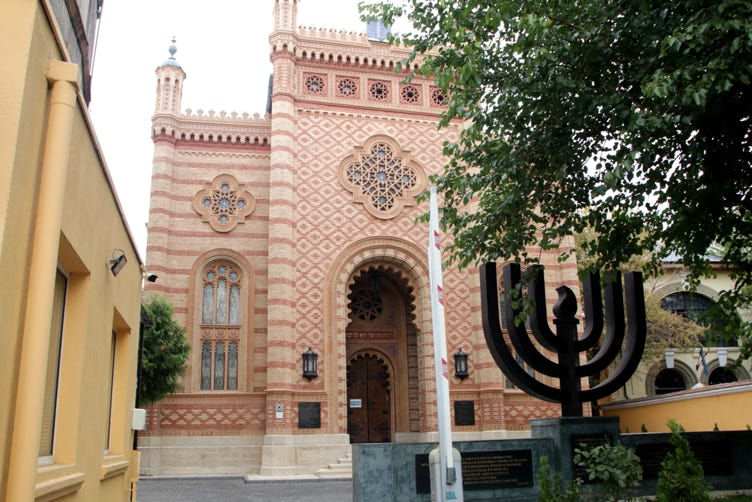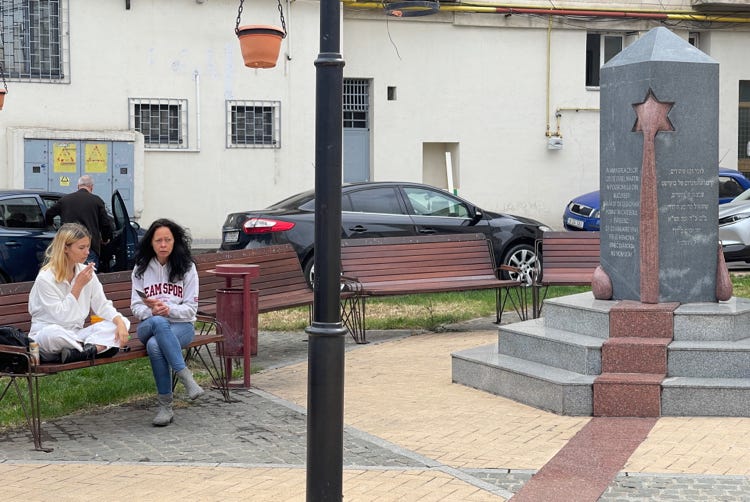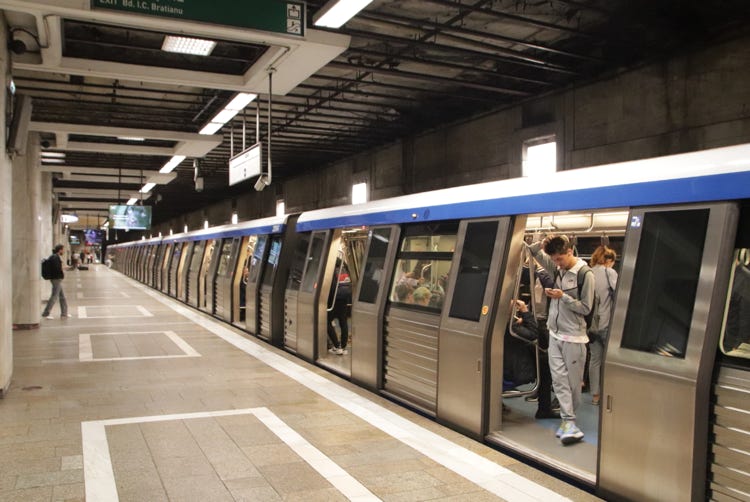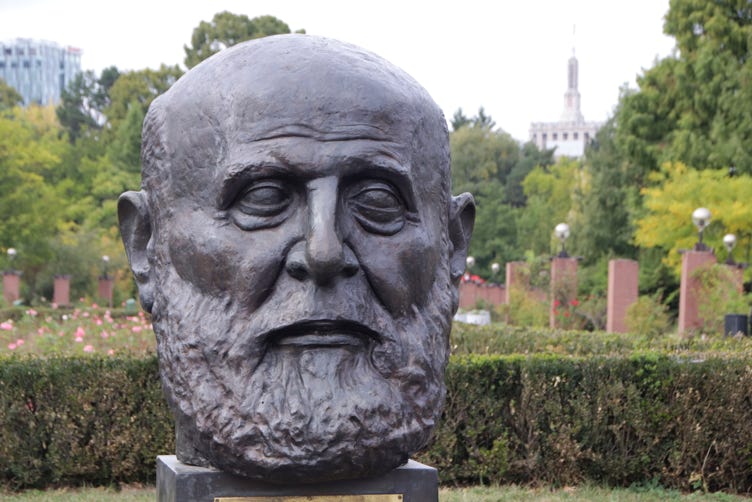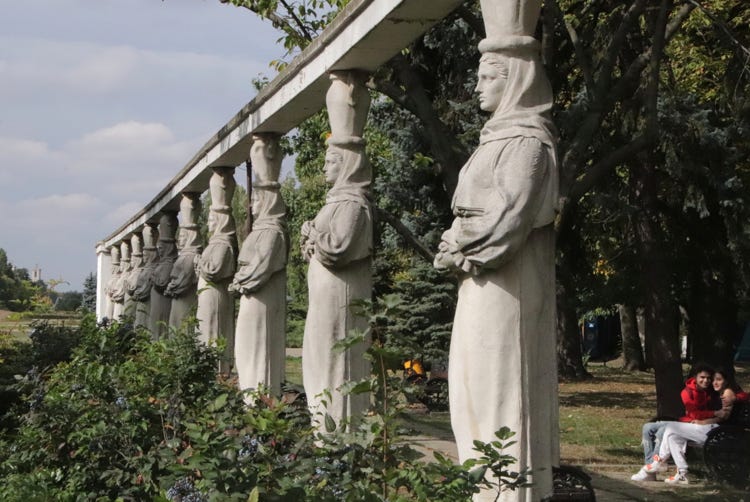
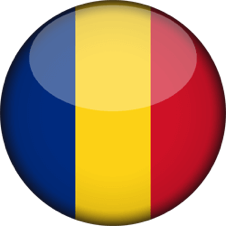
Bucharest

Distance travelled = 10 kilometres by Metro and 18.25 kilometres walking (24,400 steps).
Today’s weather forecast for Bucharest proved to be accurate – a heavily overcast, grey, sultry day. My response to that forecast was planning to visit an underground salt mine about an hour and a half’s drive north of Bucharest. After all, the weather doesn’t really matter when you are underground. Fortunately, I thought to check the opening hours and found it was closed every Monday and Tuesday, so I moved to “Plan B”, which was to explore the area in central Bucharest around Piaţa Unirii.
Piaţa Unirii is the area of Bucharest just south of the old historic centre which I had explored a few weeks ago. It was the main zone where Nicolae Ceauşescu began (but never finished) the large scale clearance of old buildings to construct his grand socialist urban vision. Today, the area contains a curious mix of old and new areas, the one common factor being the widespread graffiti and overall decay.
As I had done when I was in Bucharest a few weeks ago, I decided to do my exploring on foot rather than driving because of the difficulty in getting places to park in Bucharest and because of the chaotic driving conditions. To reach Piaţa Unirii I walked the 3.1 kilometres from my hotel through the expansive Herăstrău Park to Aviatorilor Metro Station and then took the Metro four stations south to Piaţa Unirii.
I began my walk by walking through Piaţa Sfântul Anton and past the Old Princely Court Church which had a long line of worshippers waiting to enter – the long line still being there when I passed by again several hours later. I then made an ‘organisational’ stop at the Vodaphone store at the eastern end of Splaiul Independenţei to top up my SIM card for use through Europe during the coming month, and then walked westwards along Splaiul Independenţei and around Piaţa Naţiunile Unite to St Apostle’s Church. This beautiful church, which was built in 1636, survived Ceauşescu’s clearance operations, although the surrounding parklands were ripped up and replaced with high-rise concrete housing blocks that crowd around the old church today. This beautiful little church displayed some well preserved colourful frescoes at its front entrance, and I would characterise its interior as intimate baroque Orthodox.
I continued walking to the north-west to get a closer view of the Palace of Parliament that had been possible when I was in Bucharest a few weeks earlier. Perhaps Ceauşescu’s best-known creation, the scale of the building is breathtaking, and its size was much more obvious to me today than when I had seen from a distance a few weeks ago. The building marks the western end of another of Ceauşescu’s urban initiatives, the excessively wide avenue known as Bulevardul Unirii, lined by trees on its sides and fountains along its centre. A one minute video I took today showing the fountains and the Palace of Parliament at the western end of Bulevardul Unirii can be seen HERE.
I continued south from Bulevardul Unirii to Antim Monastery. This beautiful walled complex was built in 1715, and like St Apostle’s Church, it is now closely surrounded by high-rise housing blocks. A service was underway at the monastery, and so I wasn’t able to see inside the church building; I had to content myself with seeing the (very crowded) entry courtyard.
Next I headed north, passing again through Piaţa Naţiunile Unite and proceeding to Strada Lipscani. My destination was the Holocaust Memorial which was opened in 2009 to honour Romanian Jews and Roma who died during the Holocaust. This simple, modern, concrete structure was disturbingly, but intentionally, designed to resemble a gas chamber both inside and outside – it was immediately obvious to me and it was explained as such by a caretaker (who introduced herself and made herself understood despite having no English).
Next I headed east, passing quickly through Pasajul Vilacrosse, a 19th century passageway with a yellow glass roof that casts an interesting light on the cafes and restaurants below, to the Stavropoleos Church. I had visited this beautiful 1724 church back on 8th September, but as a funeral had been underway I had been able to explore its courtyard , although I had been able to visit the interior of the church. Today I managed to look around the courtyard, but the church building was firmly padlocked. Between my two visits, I think I’ve managed to see it all.
I continued around to the front of the nearby National History Museum. I knew that the Museum had been closed for several years, but I was keen to see a statue on the front steps that was somewhat controversial when it was first unveiled in 2012. The bronze statue, just over two metres in height, showed the Roman Emperor Trajan, naked and holding a Dacian she-wolf; it had become one of Bucharest’s more well-known attractions. I don’t know what has happened to the statue, but all I found on the front steps of the museum today was a mal-formed little rectangle of concrete that I assume was, until recently, the foundation of the famous (or infamous) statue.
Somewhat disappointed by missing Trajan and his wolf, I walked eastwards, crossing the main north-south thoroughfare Bulevardul Ion C Brătianu, and then walking north to New St George’s Church. Dating from 1699, this lovely church had vibrantly coloured frescoes on its front wall and quite a lavish interior.
Just to the south of New St George’s Church is Bucharest’s Jewish Neighbourhood, and this is where I headed next. There is really nothing to distinguish this area visually from any other part of Bucharest apart from the presence of some synagogues. I was keen to visit some of these as they usually allow visitors – except as it turns out on Jewish holidays, of which today is one (Rosh Hashanah). Therefore, I was able to get photos of the outside of the Choral Temple, the Great Synagogue and the Jewish History Museum (which is in a former synagogue), but no interiors as all three were firmly closed.
As I headed to the Metro Station to return to my hotel, there was a brief burst of sunshine, so I headed across the main road to the huge fountain complex known as Fântânile Bucureşti at the eastern end of Bulevardul Unirii. Part of the appeal of the fountains is their changing patterns, so I made two short videos that can be seen at these links, one with close views (1:05) and one which is more panoramic (1:52).
My return trip north was a mirror of the morning’s trip south – taking the Metro from Piaţa Unirii to Aviator and then walking back to my hotel through Herăstrău Park.

